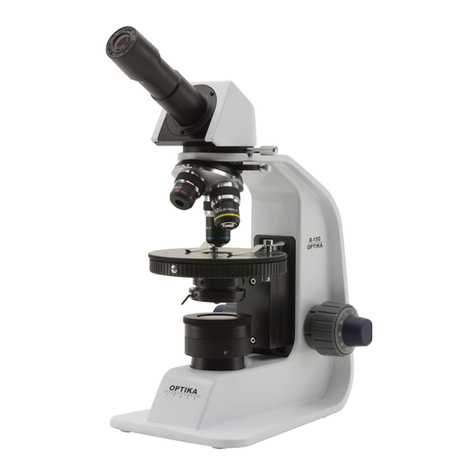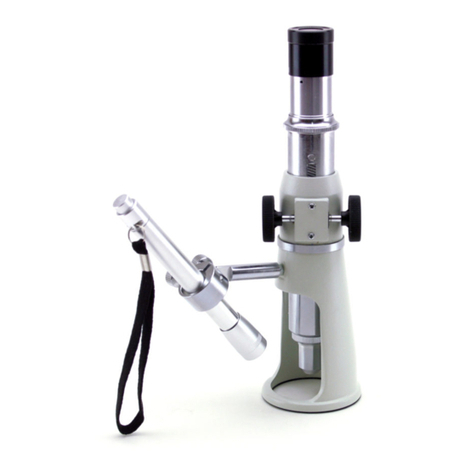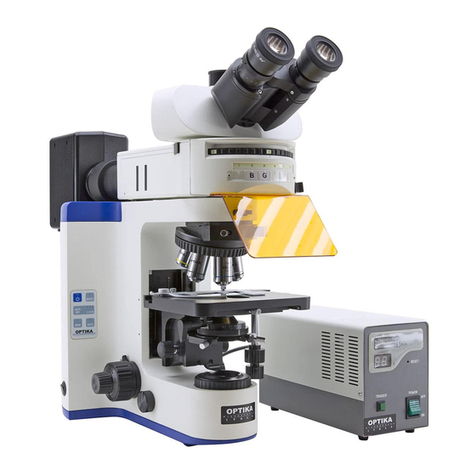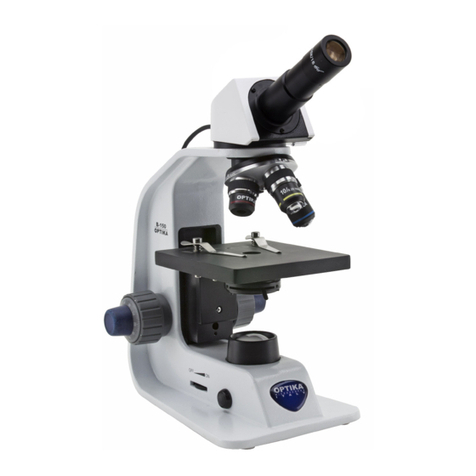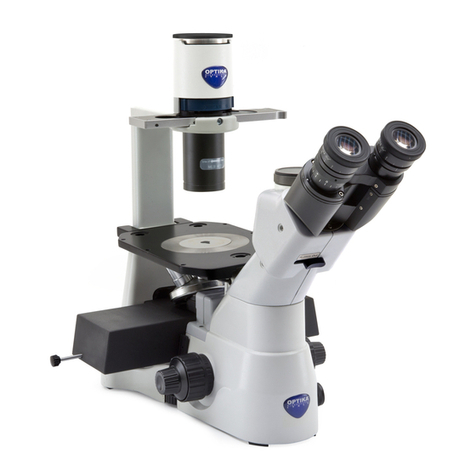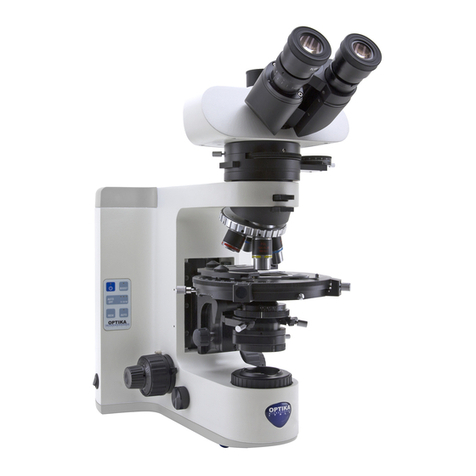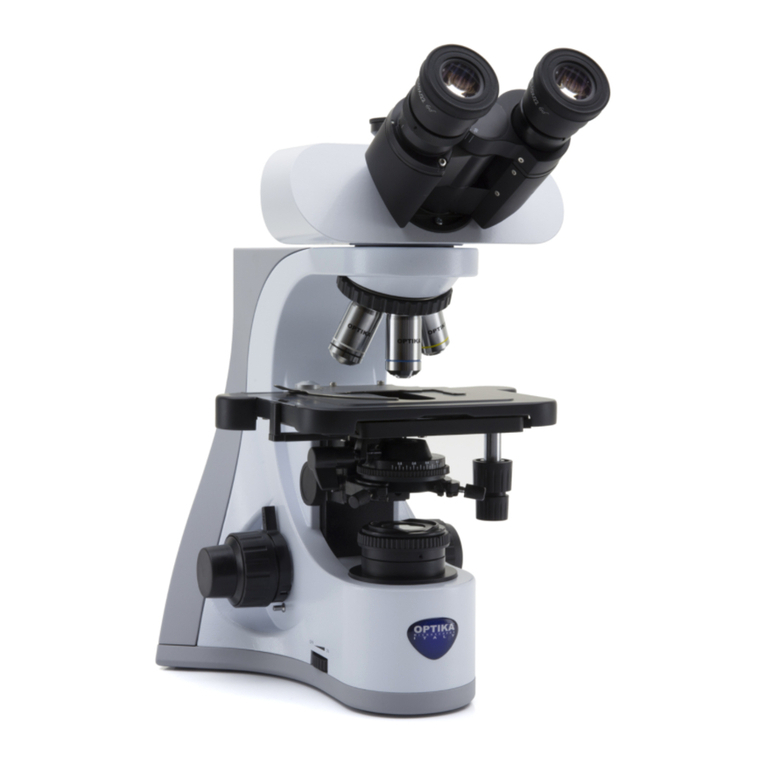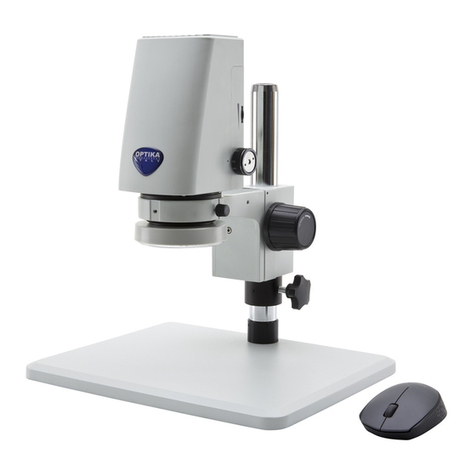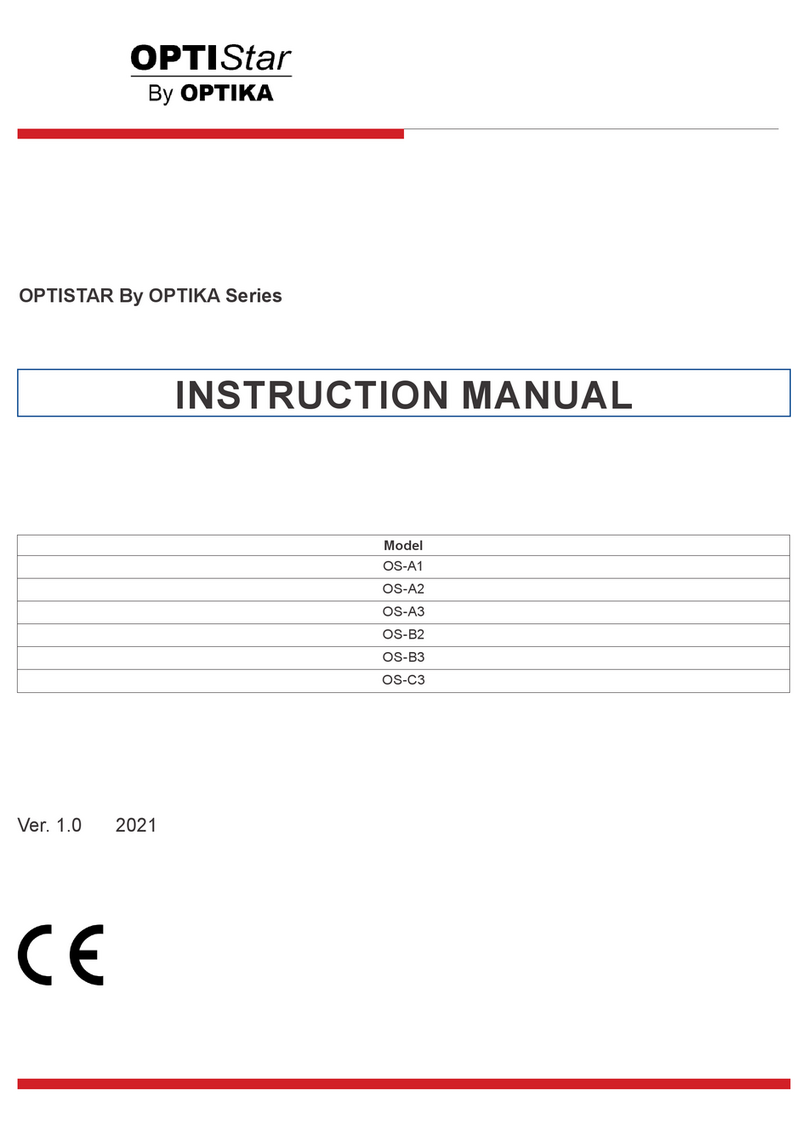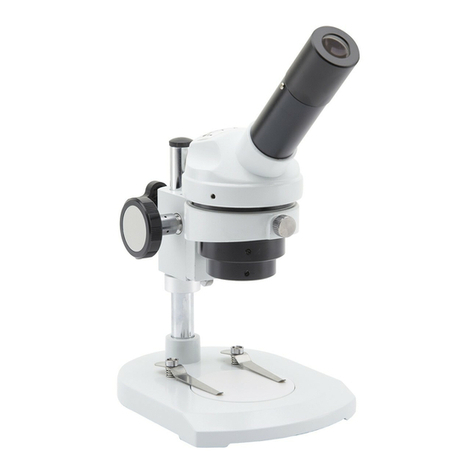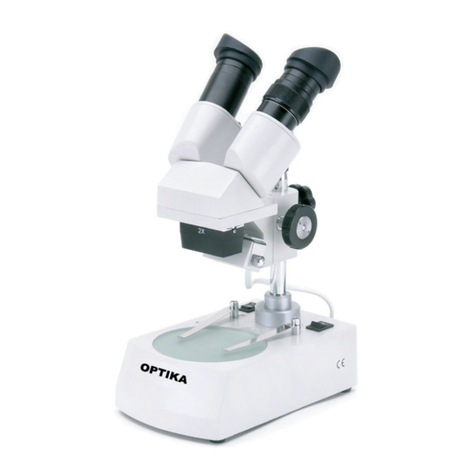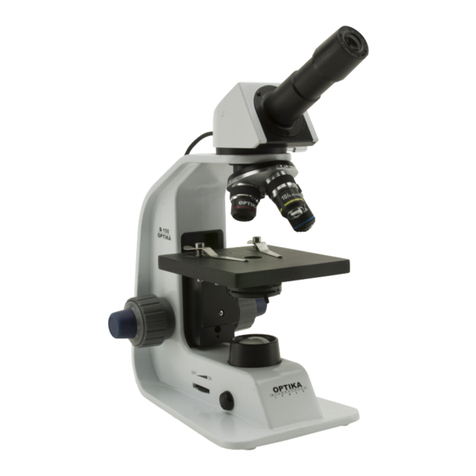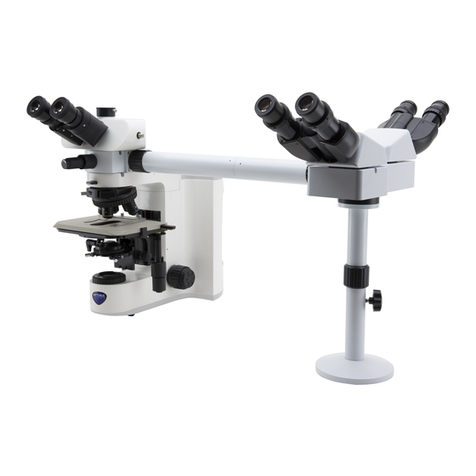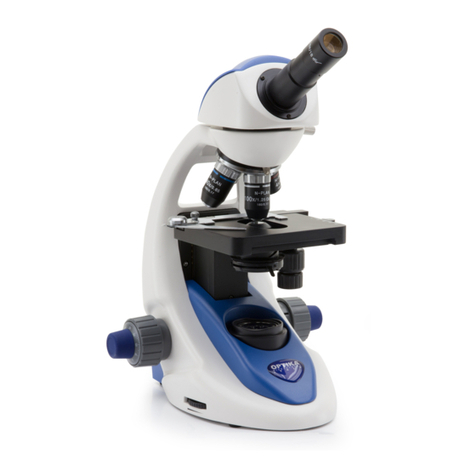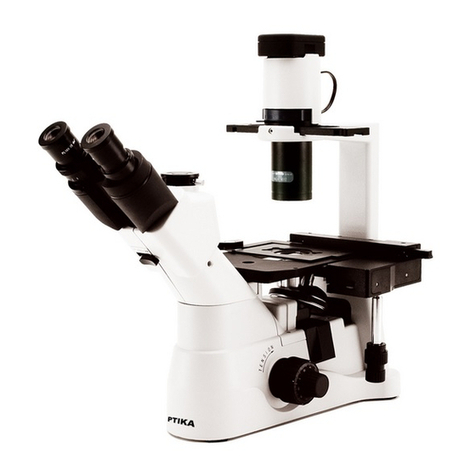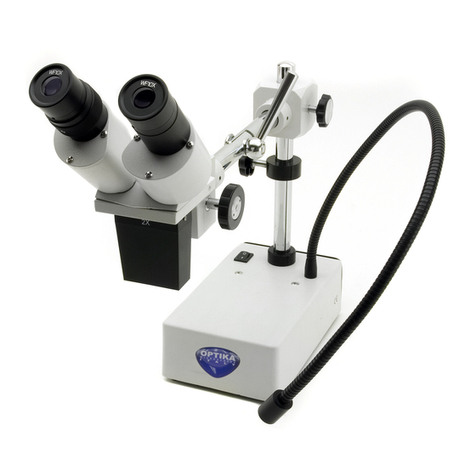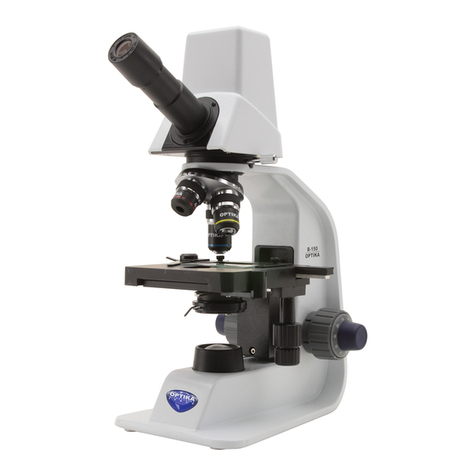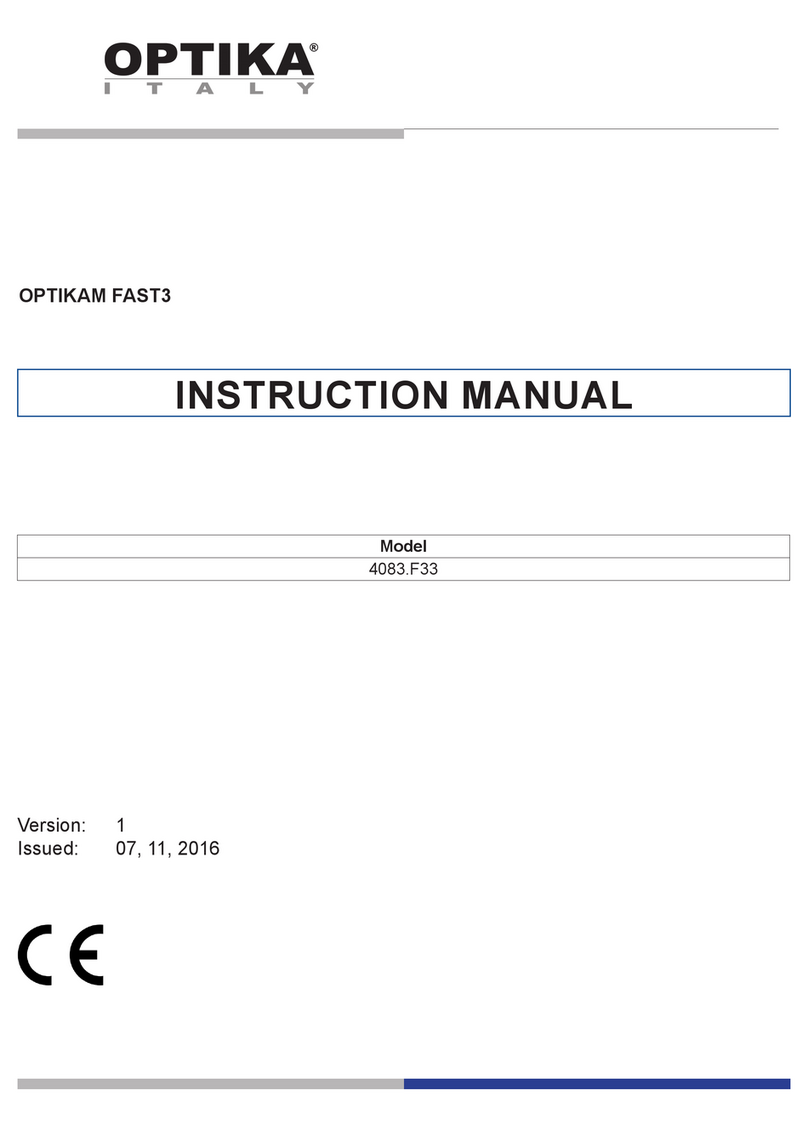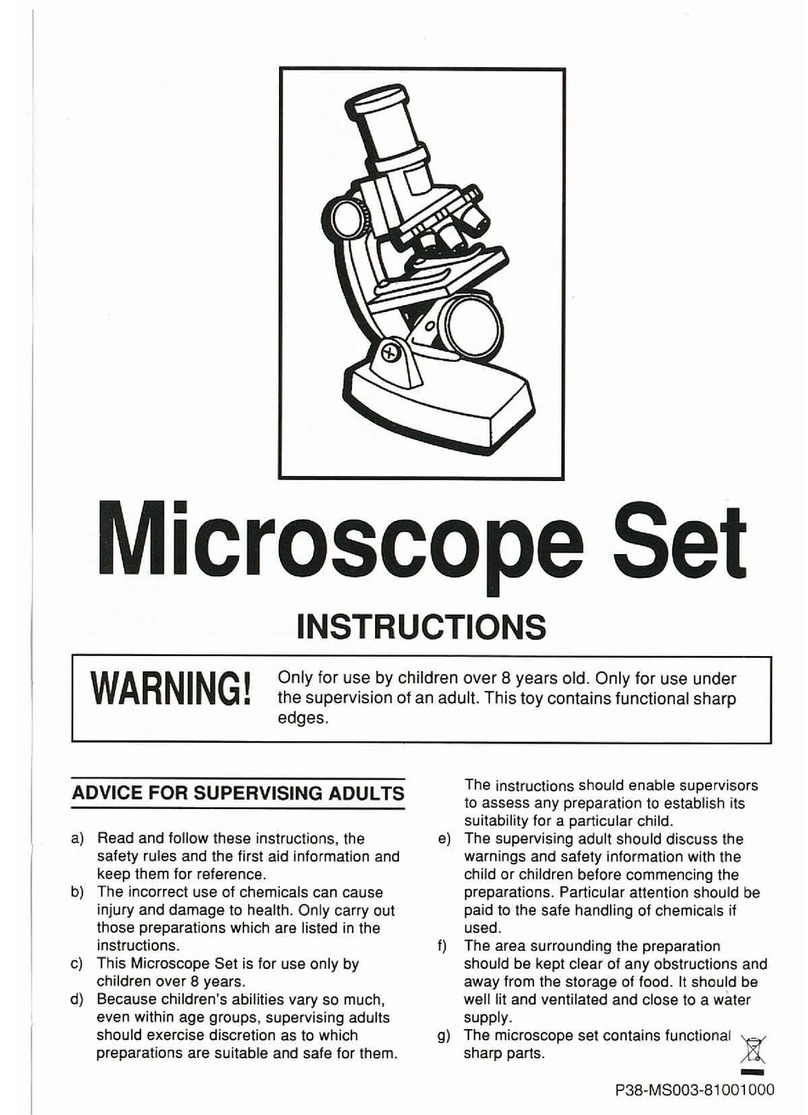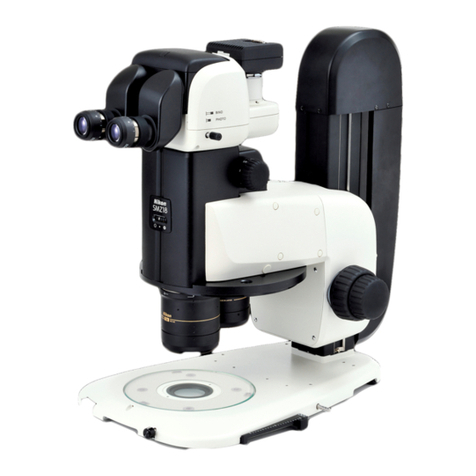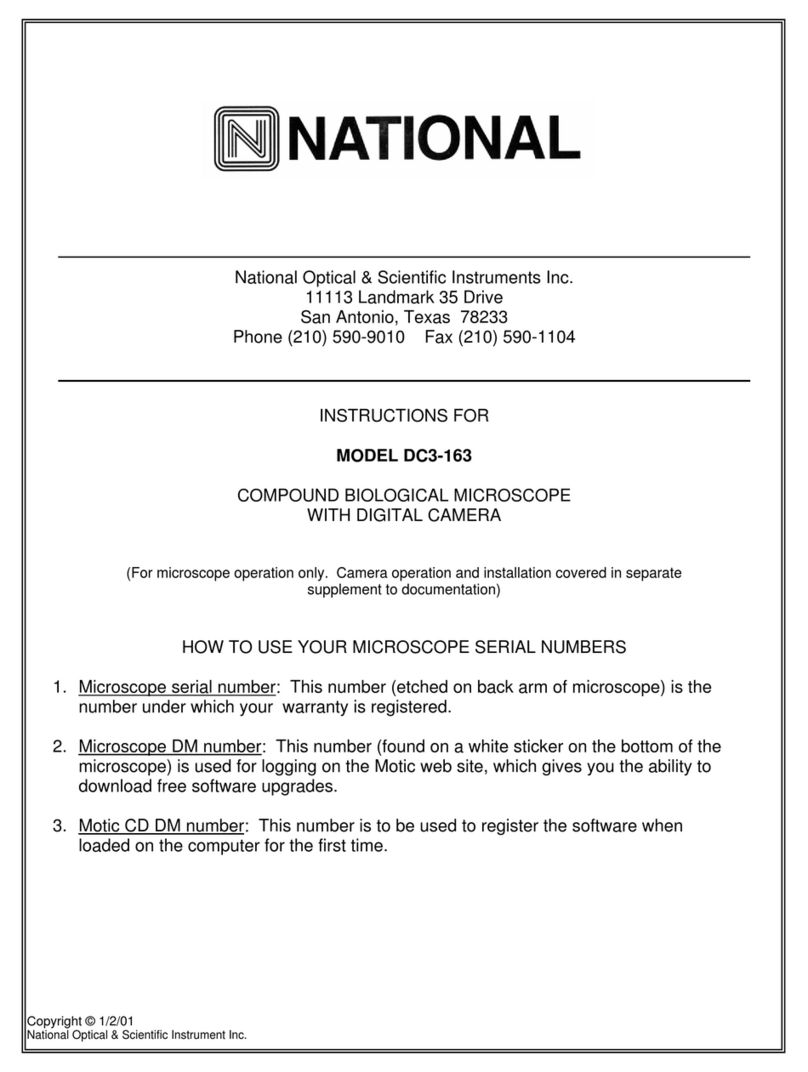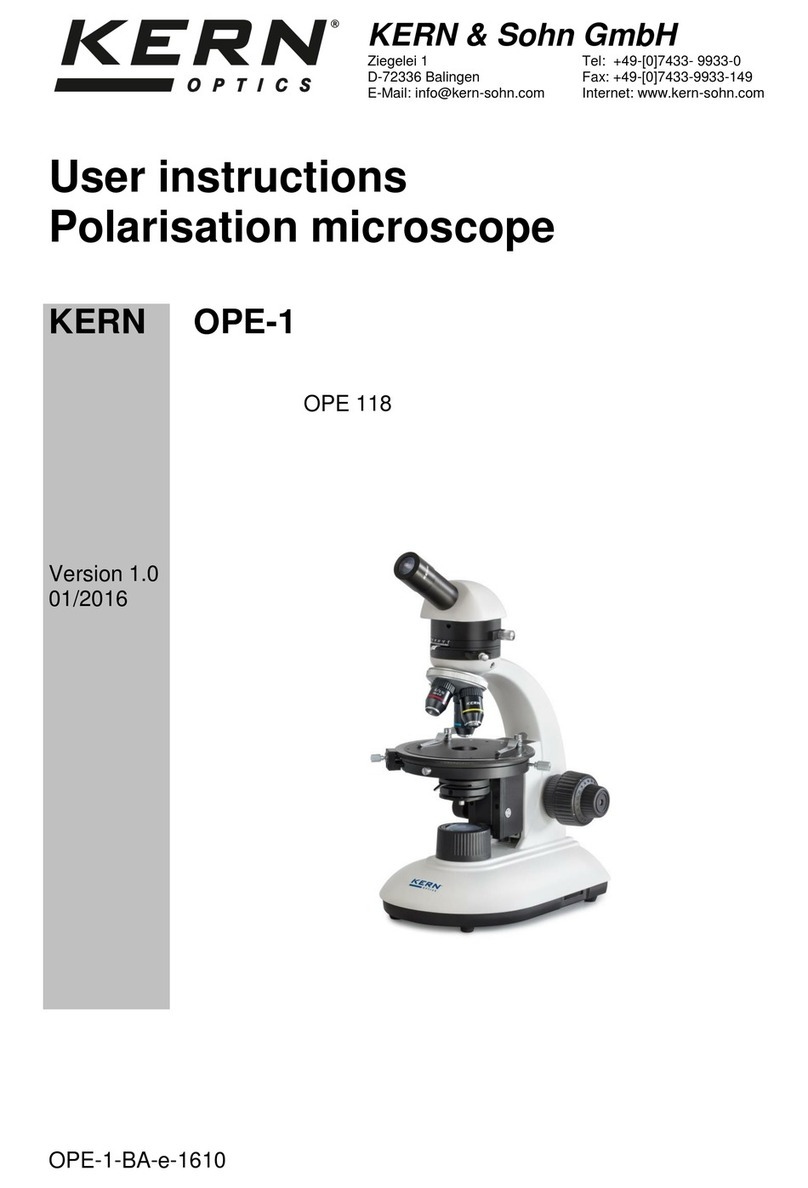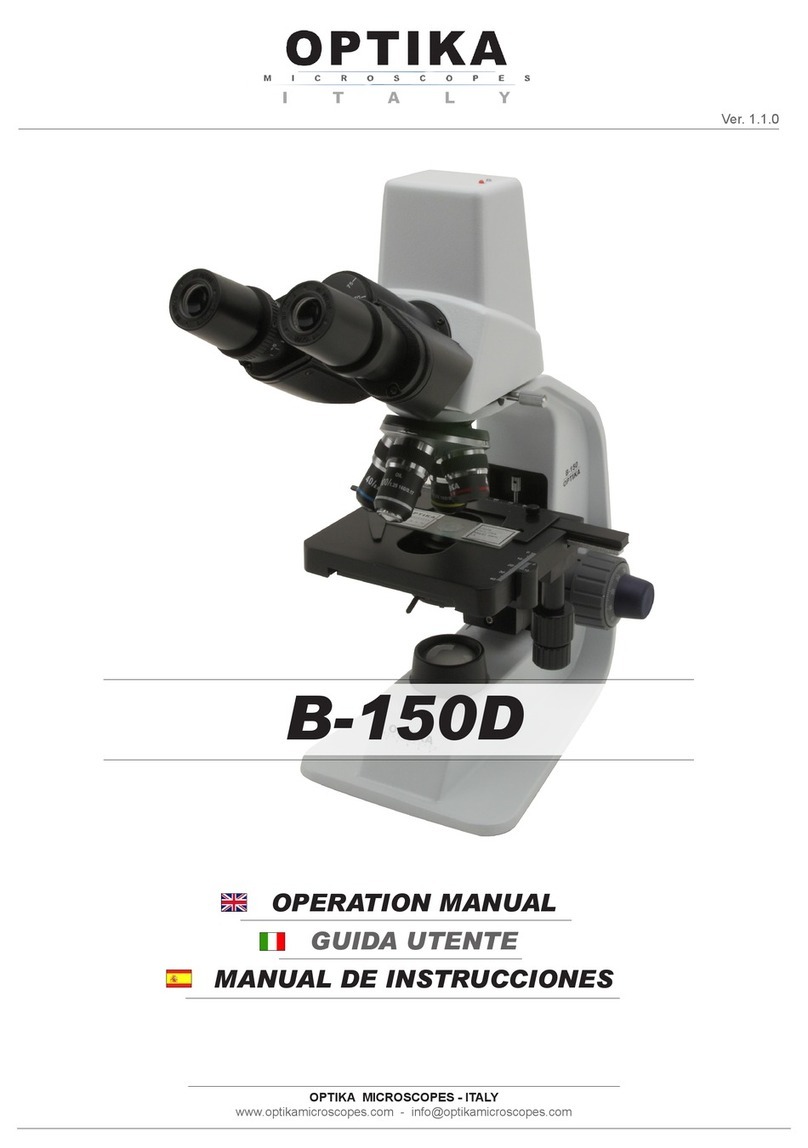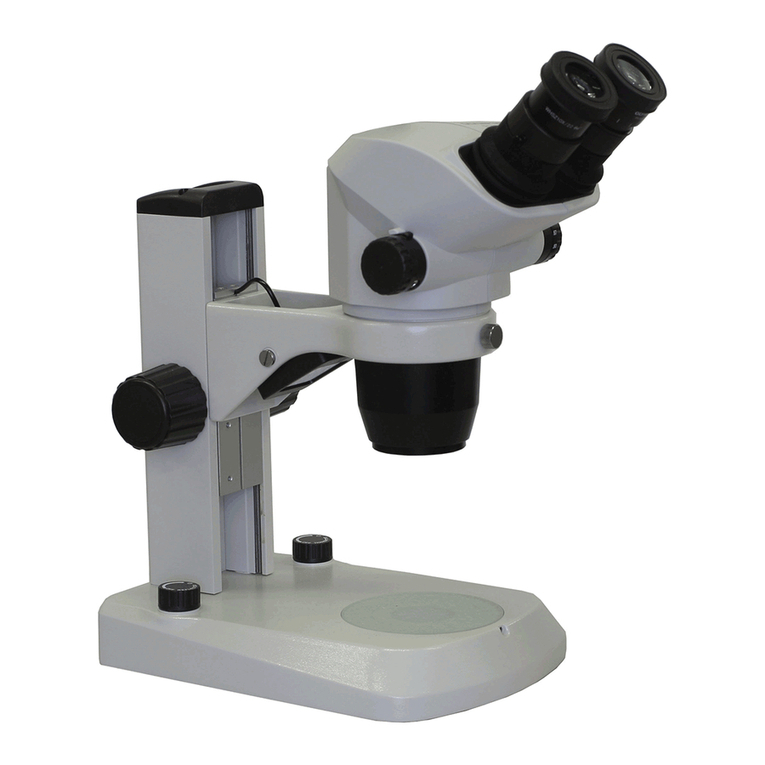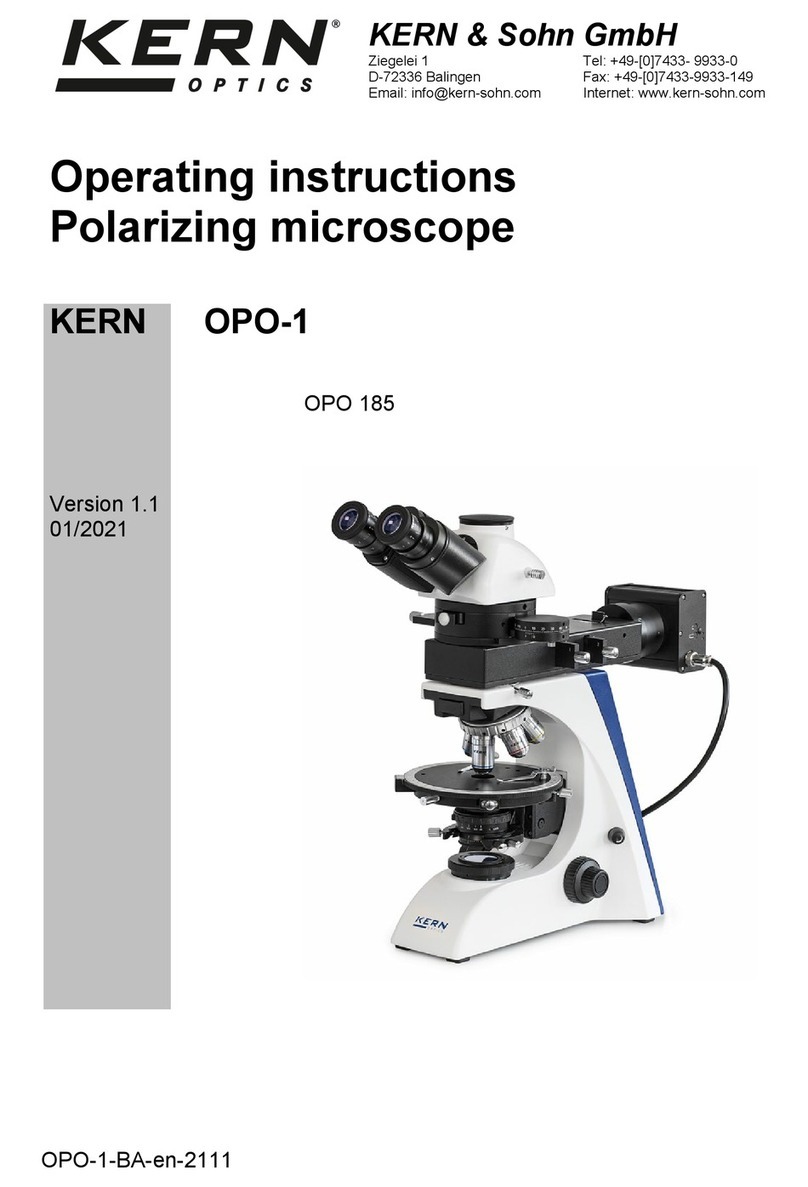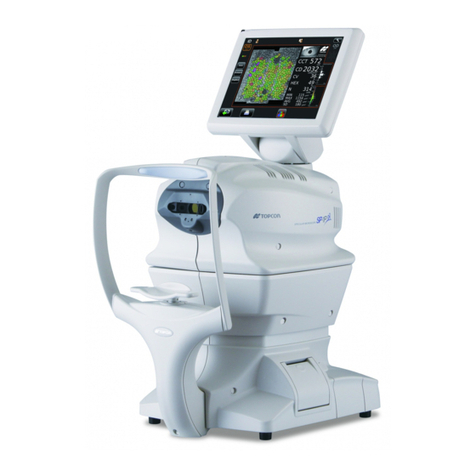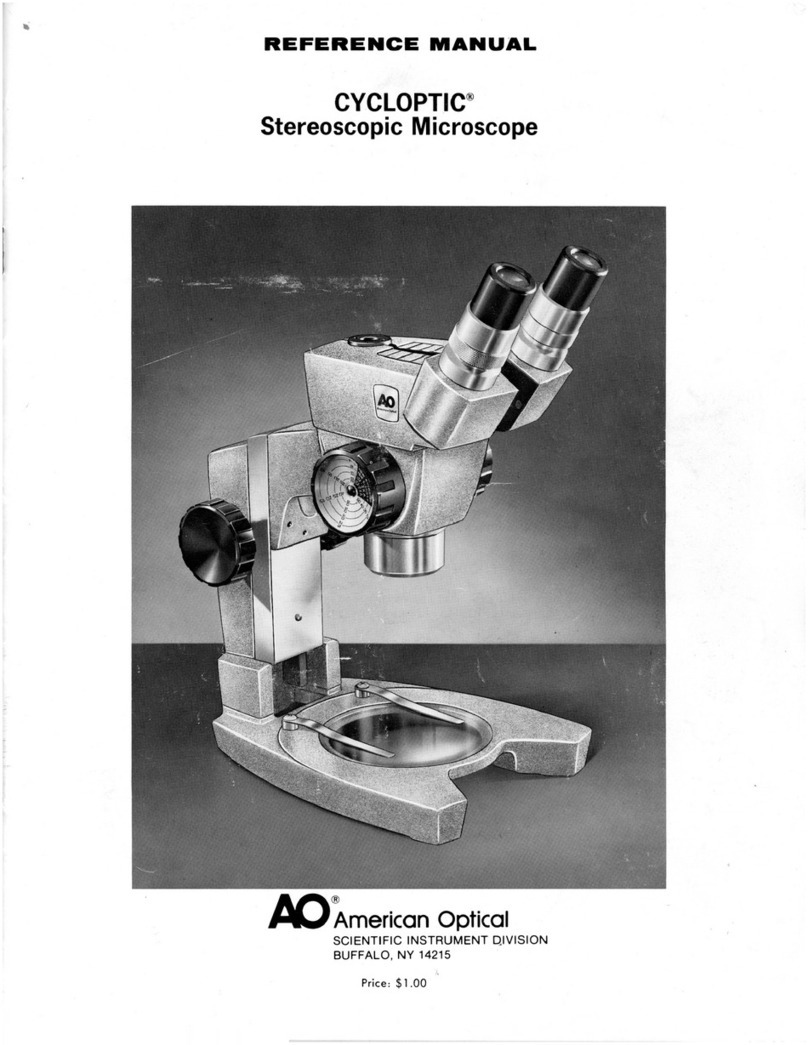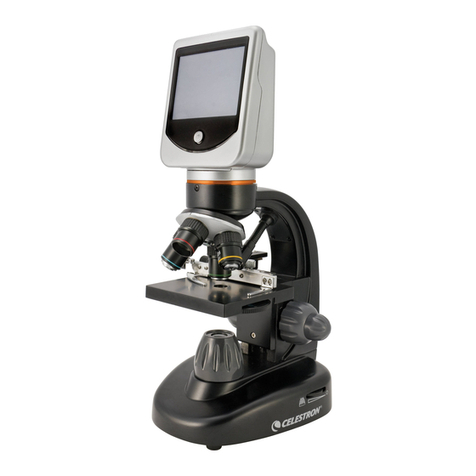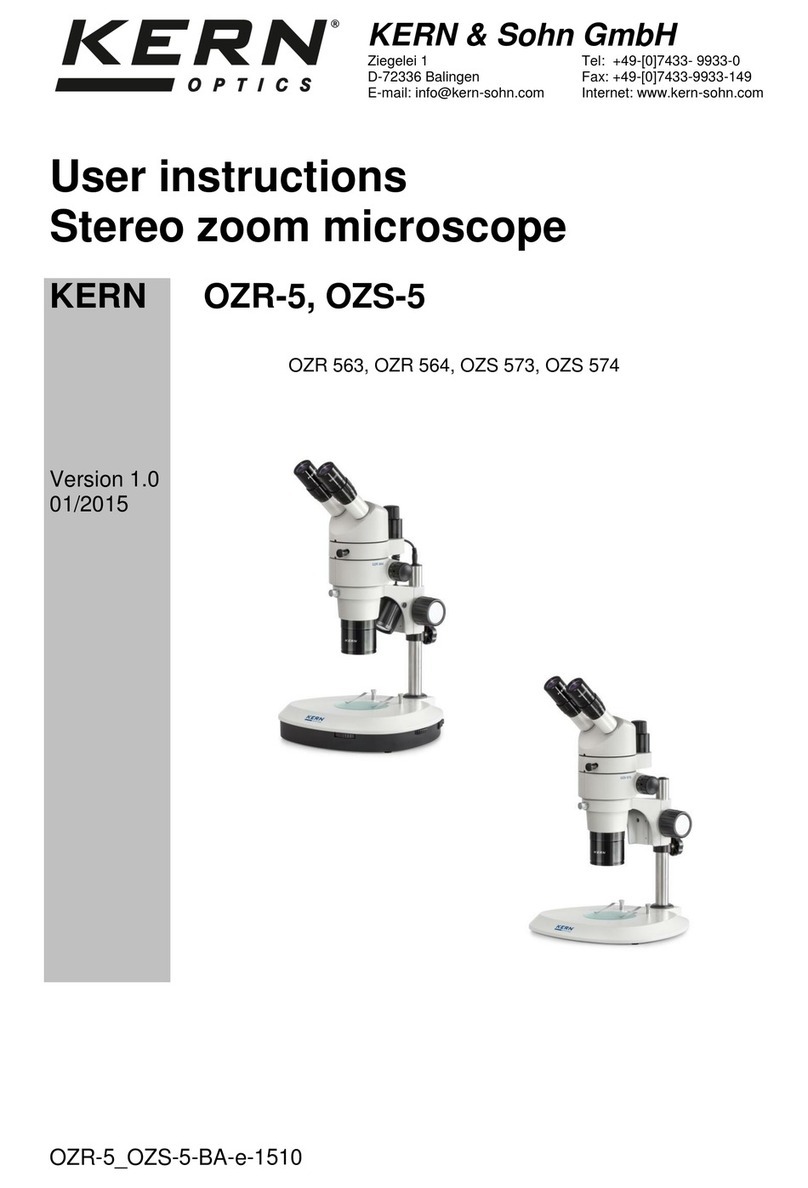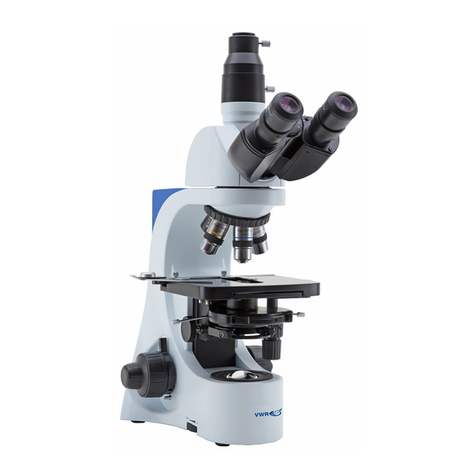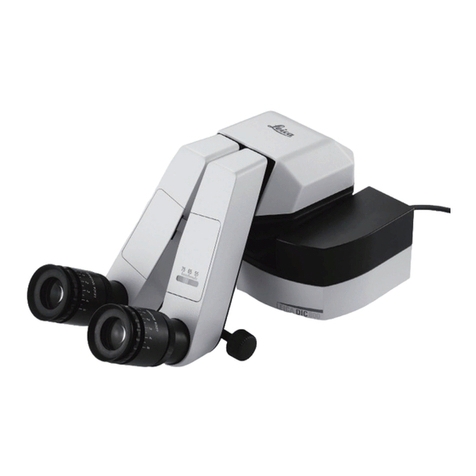
Page 7
4.1 Adjust the observation head
Loosen the lock-screw, turn the observation head to a comfortable position for observation,
and then lock the lock-screw.
4.2 Place the specimen on the stage
Put the specimen on the mechanical stage (transparent glass plate). Ensure that the speci-
men is centred over the stage opening by adjusting the coaxial knobs of the stage.
Brightfield vision
4.3 Lamp settings
The microscope is fitted with a 50 W illuminator. Insert the plug of the cable into the power
socket and turn on the switch on the back of the main body. Turn the brightness adjustment
knob (on the right of the body) until you hear a “click”, meaning that the lamp is on, then
keep turning the knob to a brightness level suitable for observation.
Lamp housing also has centring knobs for fine adjustment of illumination.
4.4 Adjust interpupillary distance
Hold the right and left parts of the observation head by both hands and adjust the interpu-
pillary distance by turning the two parts until one circle of light can be seen. After finishing
the interpupillary adjustment, turn the dioptric adjustment ring on the left eye tube to the “0”
position at the graduation line on the eyetube.
4.5 Focus and diopter adjustment
Loosen the focus-stop knob (near the left focus knob), rotate the coarse focusing knob to
bring the slide into focus with an objective with a low magnification, and then lock the focus-
stop knob. Adjust the fine focusing knob to get the image sharp and clear while observing
with your right eye, then turn the left dioptric adjustment ring to a sharp and clear image
also with the other eye. Turn the tension-adjust-knob (near the right focus knob) to get a
suitable tension for the focus system. When the image is in focus, turn the nosepiece to
choose the objective you need.
4.6 Condenser adjustment
Turn the condenser adjustment knob to move the condenser up or down for a clear and
uniform sample illumination. The two condenser-centring screws can be used to centre the
condenser.
4.7 Set the numerical aperture
Adjust the aperture of the iris diaphragm to set the numerical aperture of the illuminator,
thus controlling image contrast and resolution.
4.8 Field diaphragm
Adjust the field diaphragm to align the system and to control stray light.
4.9 Additional filters
The chromatic correction filter (blue) can be inserted into the holder (just above the ring of
the field diaphragm) for definition of specimen parts.
4.0 USING THE MICROSCOPE
